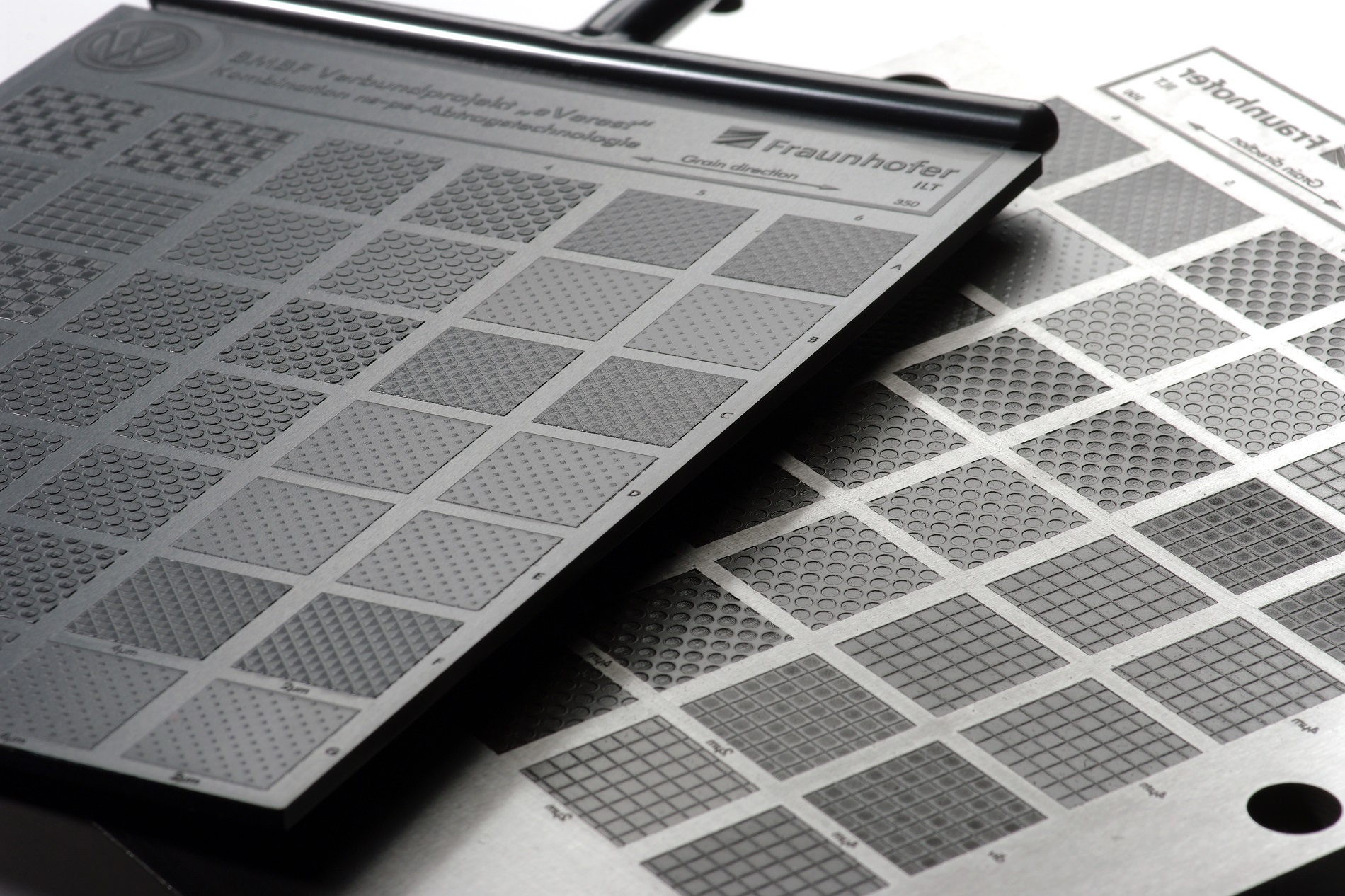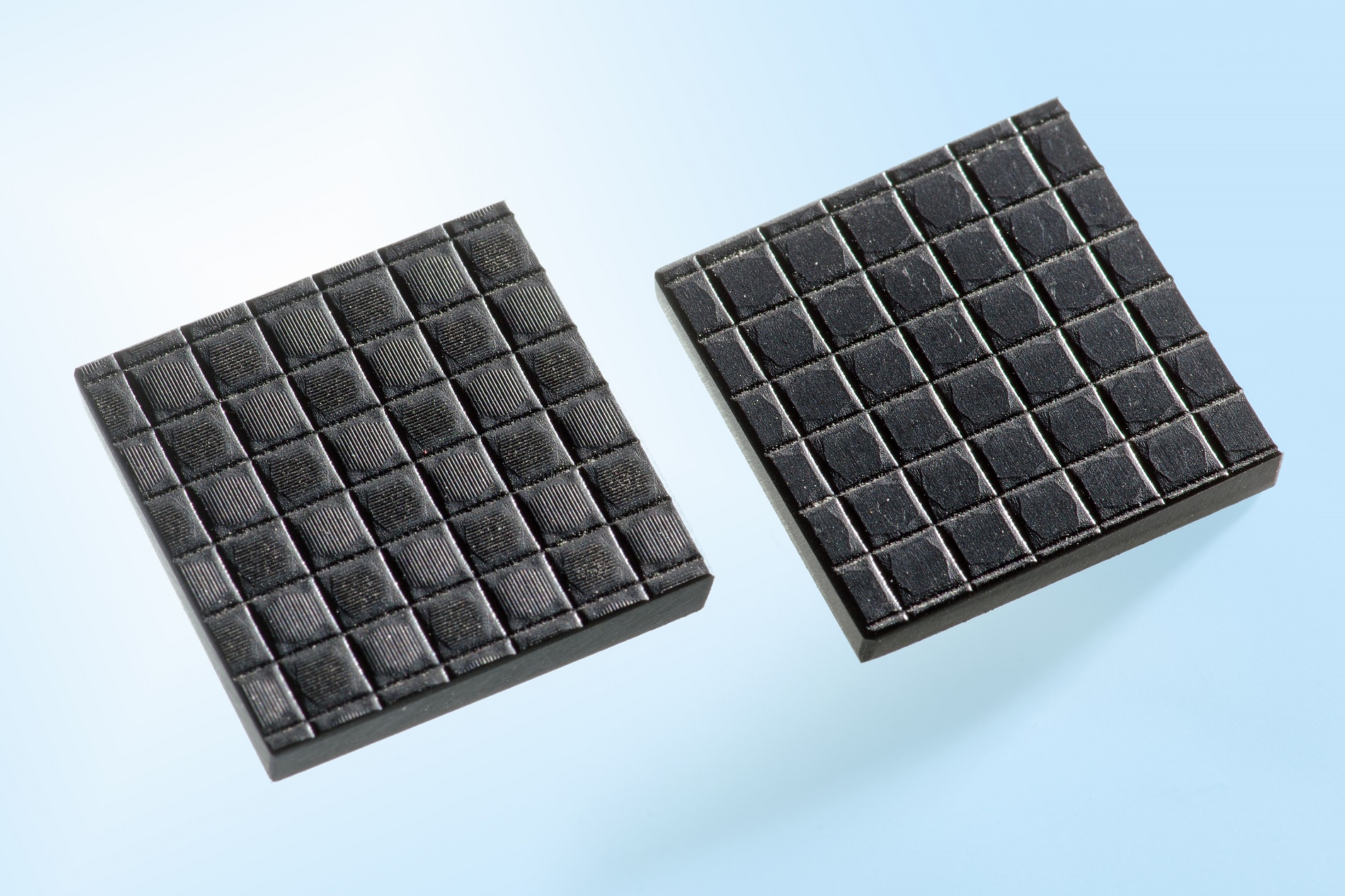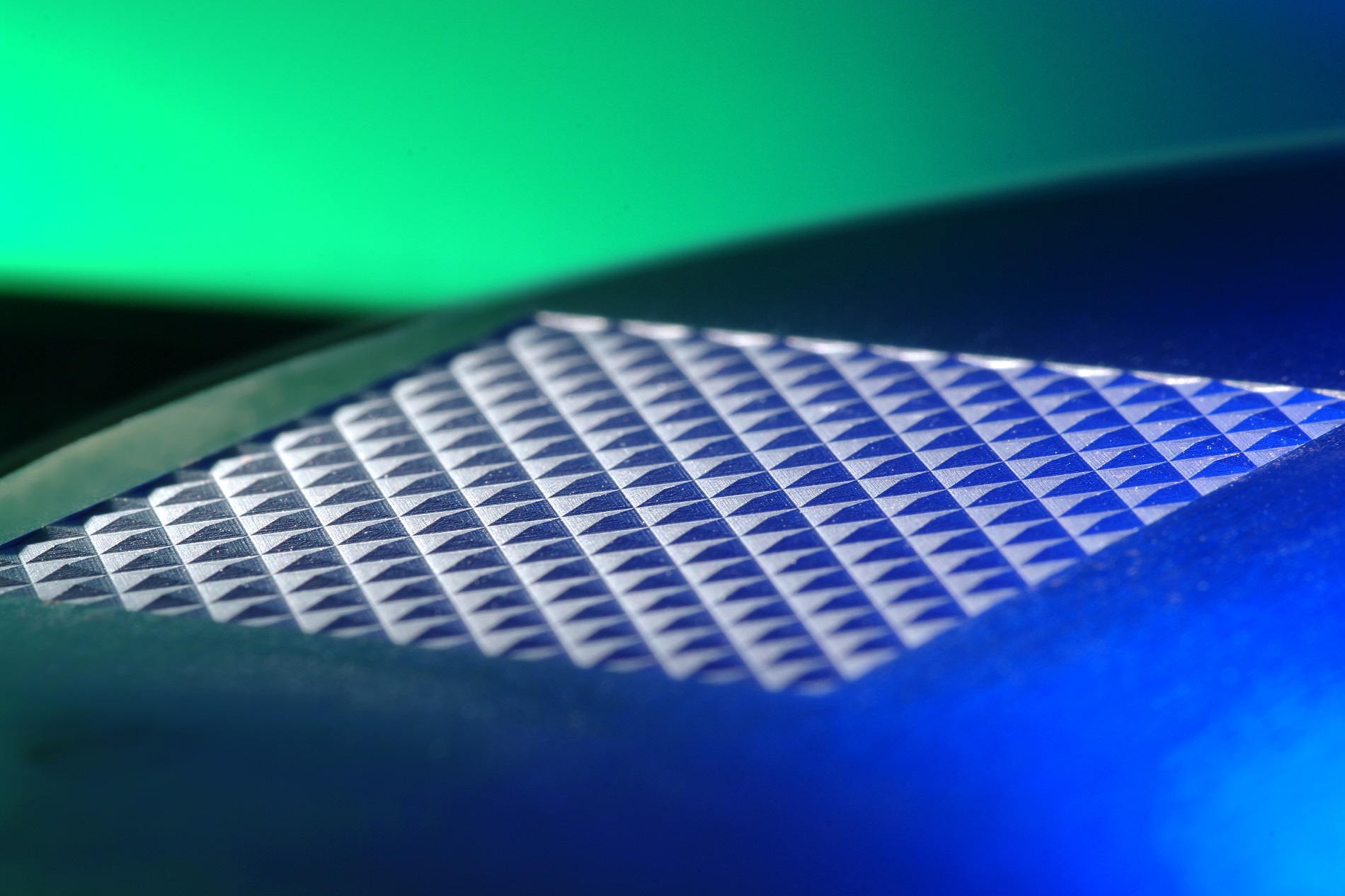March 15, 2017
In the automotive industry, more and more surfaces are getting a microstructure treatment. Whether they are added to cylinders or dashboards, functional surfaces are all the rage. Able to offer virtually unlimited precision, lasers are the right tool for the job. To ensure that productivity matches precision, development is under way on a machine that will be able to efficiently process even large surfaces thanks to a combination of two different pulse types.
Ultrashort pulse lasers have for many years been the tool of choice for processing micromaterials. No matter what the material, ultrashort pulse lasers can ablate even in the micrometer range with high precision. The only catch is that it takes plenty of time concerning the industrial application.
Up to now, the answer has either been more laser power, faster scanning or splitting the laser beams into multiple beams. A new research and industry consortium is taking a different approach, with partners developing a laser machine that uses a strict ultrashort pulse laser only for the finest details. The rest of the work is previously done using a productive nanosecond laser.

A combination of nanosecond and picosecond pulses make the precision manufacture of functional surfaces also efficient.
© Photo Fraunhofer ILT, Aachen, Germany.
New laser machine for the automotive industry
A glance into a vehicle’s interior is enough to see that detailed structures convey the feeling of exclusivity. For a long time, leather was the dominant look. Now the preference is for fine, more technical structures and most of these 3D parts are manufactured using plastic injection molding.
The injection molding tools featuring the required detail in the micrometer range are often produced using photochemical etching processes. The individual stages are repeated over and over, requiring processors with a feeling for finesse since they are not reproducible.
This work can also be done using lasers; especially nanosecond lasers achieve similar throughput rates to etching processes. But they tend to reach their limits when it comes to precision – they begin to melt the material leading to rough contours, especially for intricate structures.
Ultrashort pulse lasers emitting picosecond pulses might not achieve the required throughput rates, but they can perform ultra-precise ablation. Finding a way to combine picosecond and nanosecond pulses is the goal of the eVerest research project. Funded by the German Federal Ministry of Education and Research, the project is aiming to develop a complete machine and system technology for the efficient manufacture of large-format, 3D mold tools for designer surfaces.
Operation without actually having to be an expert in the technology involved
The project, which began in early 2016 and is scheduled to run until the end of 2018, has researchers from two universities working with a comprehensive range of industry partners. Laser manufacturers, system integrators and an automotive OEM are among those collaborating to develop a complete solution including software, lasers and a machine concept that will support 8-axis simultaneous processing.
A key project objective is that it must be possible to operate the machine without having to be an expert in the underlying technology. This would mean a significant advantage over the abovementioned finesse required for etching processes. Ultimately, precision-controlled laser technology paves the way for full automation.

Step-by-step processing: A basic structure is created with nanosecond pulses (right), before the detailed work is performed using highly precise, ultrashort picosecond pulses (left).
© Photo Fraunhofer ILT, Aachen, Germany.
Understanding the process is the key to performing it
Although the process itself is being developed with partners at Volkswagen, its areas of application extend far beyond the automotive industry. No matter whether they are for embossing rollers for the printing industry or large bearings for the rotor shafts of wind turbines, functional surfaces are in demand in any number of sectors.
The core topics governing the development of the new systems are an in-depth understanding of the process and how to adapt the process technology. These issues are also the focus of this year’s UKP-Workshop: Ultrafast Laser Technology, which will be held on April 26 and 27, 2017 in Aachen. This will be the fourth year for the event that brings together specialists in laser development, process technology and the industry at large to discuss their experiences in ultrashort pulse laser research, development and applications.
For more detailed information:
UKP-Workshop: Ultrafast Laser Technology: www.ultrakurzpulslaser.de/en














